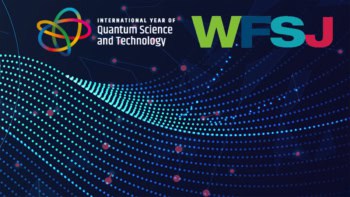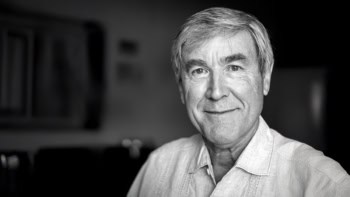
A new type of quantum memory that could extend the range of quantum encryption systems has been unveiled by physicists at Harvard University in the US. It offers a secure way of allowing an intermediate to assist in the transmission of quantum information and could lead to the more widespread use of quantum key distribution (QKD) cryptography.
Using QKD, two people (Alice and Bob) rely on quantum mechanics to exchange information secretly. Alice sends Bob a series of quantum bits (qubits) encoded into the polarization states of single photons (or weak coherent light pulses). By carrying out a series of measurements and communications over an insecure link, Alice and Bob generate an encryption key that they can use to send secret messages over an insecure link. Crucially, if an eavesdropper (Eve) intercepts and measures the quantum bits, Alice and Bob are alerted thanks to the laws of quantum mechanics.
Although some commercial QKD systems are in use, sending single-photon qubits over long distances in optical fibres is a significant technical challenge. The current record for QKD over a commercial telecom link (rather than a dedicated link) is 50 km.
“Photons get lost”
“At its core, the reason we don’t have a quantum internet right now is that photons get lost,” explains team member Bart Machielse: “Photons are scattered out of fibres, photons are absorbed, and as the links get longer the communication rate goes down.” Incorporating multiple photons into each pulse would remove the absolute security, as Eve could measure one photon without disturbing the others.
One possibility is to incorporate a third party (Charlie) between Alice and Bob to measure the states of the photons they exchange. However, if the security is to remain absolute, Charlie cannot simply measure the state of a photon from one party and compare it to the next photon he receives from the other, as he may not be trustworthy himself.
Here, too, quantum mechanics offers a solution: Charlie compares the polarizations without knowing their individual values. “Charlie does measurements on both photons and says ‘These are the same’ or ‘These are different’,” explains Machielse, “Alice and Bob say ‘I know what photon I sent’ and ‘Charlie tells me our photons are the same or different’.” This preserves the security of the communication even over an insecure link.
Simultaneous measurements
One problem with current technologies is that to make a secure comparison, Charlie must receive the photons simultaneously from Alice and Bob – which happens rarely. Researchers have therefore tried to develop a quantum memory that allows Charlie to store the quantum state of a photon he receives without measuring it. “People have used memories ranging from trapped atoms and ions, quantum dots, different defects in diamonds, you name it,” says Machielse. None of these, however, have actually improved over what can be achieved by direct photon exchange.
In the new research, Machielse and colleagues created a memory using a silicon vacancy centre (Si-V) in a diamond. A Si-V is a defect formed when two carbon atoms in the diamond lattice are replaced by one silicon atom. This creates a quantum spin that is isolated from the environment and can be measured using laser light and microwave pulses.
The team placed their Si-V inside a nanophotonic cavity held at ultracold temperatures. The spin of the Si-V can be flipped by absorbing a 737 nm wavelength photon. If the spin state of the Si-V does not change after absorbing two photons, Charlie knows that the two photons had the same polarization as each other. If the state has been flipped, the polarizations must have been opposite. Crucially, however, Charlie does not know the polarization of either photon.

Diamond defects coupled to photonic cavity with nanoscale accuracy
Another key feature of this implementation is that the photons from Alice and Bob do not have to arrive simultaneously at the Si-V. Instead, the Si-V stores the polarization of the first photon until the arrival of the second.
The Si-V-based quantum memory achieves both very strong and very reliable spin-photon interaction. “With a lot of the other memories, either not every photon that arrives is stored, or an error happens in the storage process and the information is essentially useless,” explains team member Ralf Riedinger, “We achieved low enough error rates that, even after correcting for the errors, we still achieved faster communication than anything possible with a direct communication link.”
The researchers describe their work in Nature. Sophia Economou of Virginia Tech in the US says “This is a very significant paper: I would call it a milestone in the field of quantum networks”. She believes the work opens up “several future directions” such as transferring information from the electronic spins of the Si-V centres to the more stable nuclear spins of the surrounding carbon-13 isotopes in the diamond: “Achieving this would allow storage of information for longer periods of time, boosting performance of the protocol and opening more opportunities for quantum networks,” she says.



